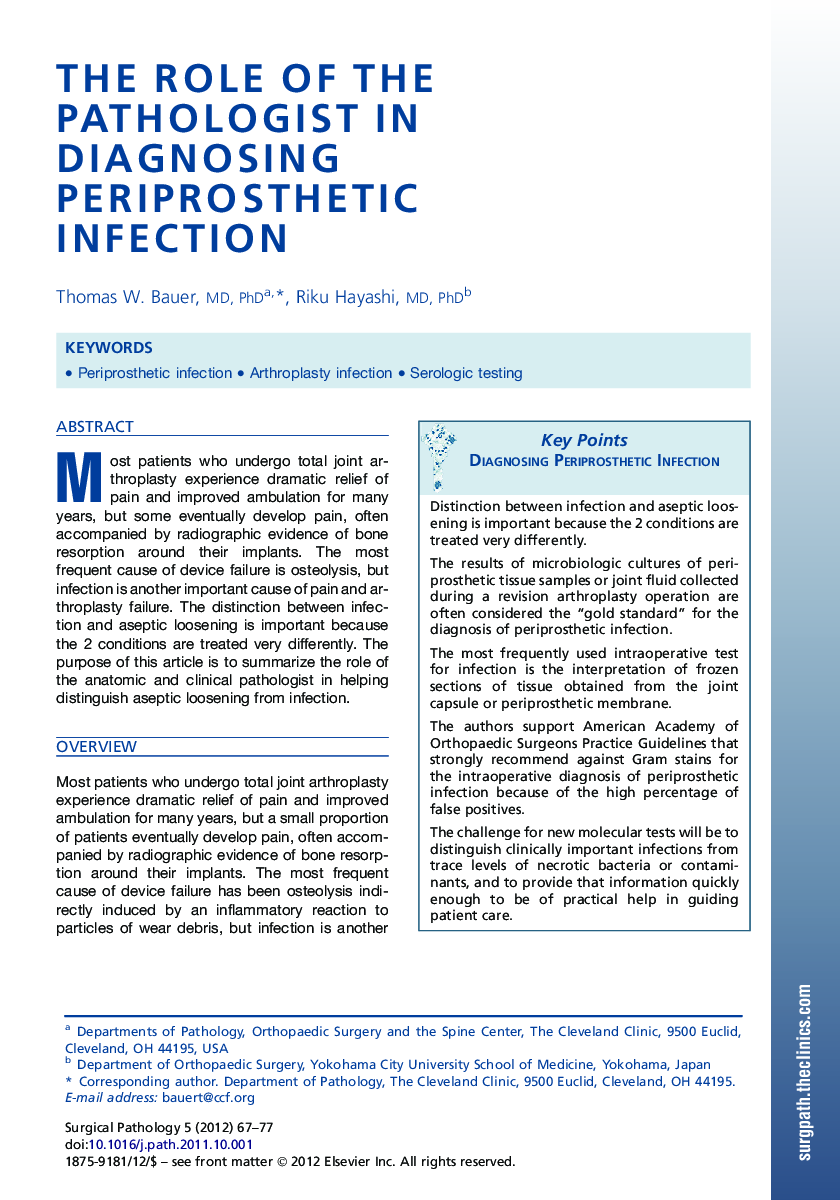| Article ID | Journal | Published Year | Pages | File Type |
|---|---|---|---|---|
| 3334648 | Surgical Pathology Clinics | 2012 | 11 Pages |
Abstract
Most patients who undergo total joint arthroplasty experience dramatic relief of pain and improved ambulation for many years, but some eventually develop pain, often accompanied by radiographic evidence of bone resorption around their implants. The most frequent cause of device failure is osteolysis, but infection is another important cause of pain and arthroplasty failure. The distinction between infection and aseptic loosening is important because the 2 conditions are treated very differently. The purpose of this article is to summarize the role of the anatomic and clinical pathologist in helping distinguish aseptic loosening from infection.
Related Topics
Health Sciences
Medicine and Dentistry
Hematology
Authors
Thomas W. MD, PhD, Riku MD, PhD,
